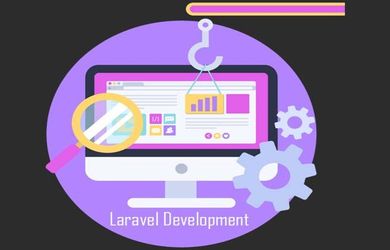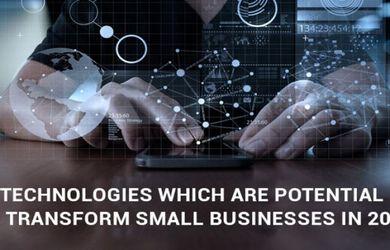
How to take advantage of social media algorithms?
What are algorithms and what are they for in social networks?
Algorithms in social networks, just like what happens in the Google search engine or in so many other applications, are still mathematical functions that are programmed to establish rules of the game within each platform.
The nice thing about that is that the algorithms are not public and the only way for those of us who are not in the company to know what these rules are is trial and error, in addition to a statement from the companies themselves, which do not really count a lot.
What are algorithms for social networks?
Although they can be annoying for almost any Community manager, the algorithms really have a specific and positive function.
But of course, the algorithms are not perfect and sometimes they weigh down a good job you may be doing.
Social media has become much more than just a common platform to communicate. In fact, they have become an integral and fundamental part of digital marketing. Businesses around the world turn to social media to help large and small companies reach consumers. However, this field of marketing is being …
The most important social media algorithms
Next, I am going to tell you more about the most important points of the most important Social Media Market, that is help: Facebook, Instagram and Twitter.
Everything you need to know about Facebook’s algorithm, EdgeRank
The most powerful algorithm when it comes to social networks is, without a doubt, that of Facebook.
If you stop to think, it is very normal that it is so because this social network has been the majority in the whole world for many, many years.
Read Also: A Quick Guide to renting SEO for your Business
As a company, we can say that there was a before and an after, when Facebook went public, back in May 2012.
There we can say that Facebook began to grow older, by force, thanks (and through fault) of its investors, who had to be content with money, not with promises of relevance.
Facebook there really began to develop its advertising system ” Facebook Ads ” and its algorithm, which has been refined over the years.
Only in 2018 we have had two algorithm changes, the first one at the beginning of the year, just in January and then another that began to give signals in April.
Both algorithm changes (and those to come) tend to focus on limiting the reach of company pages and prioritizing content from users’ friends and family.
As Community Managers normally manage company pages, the Facebook slogan is clear.
Yes, I know this can be very hard and the statistics on your Facebook page can go quite low, so I would like to go deeper:
Key points of the Facebook algorithm
Actually the Facebook algorithm has a super simple base and knowing it will help you to make it play in your favor:
- Facebook is more likely to show content from friends and family versus pages.
- Facebook is more likely to show group content than page content.
- For page content, the more interactions a user has had with that page, the more likely it is that Facebook will display the content.
Then the total ranges change, but the basic rules of the game always remain that way.
Reading a little more deeply these three basic rules, we can draw several conclusions about the Facebook algorithm:
1.- If you publish and the community does not react, you will end up not appearing
So clear.
If when you publish an update you see how you have fewer and fewer interactions, you either change your editorial plan and try new things that move the community or you will end up disappearing completely.
This is because, if the community does not interact with your content, the next time you launch something it will have a lower probability of going out on its timeline.
This lengthened in time can lead you to what is known on Facebook as “organic death”, which is nothing more or less than launching a publication and that virtually nobody sees it organically.
In my experience, I have seen pages with more than 400,000 fans having reaches of less than 1,000 users.
Come on, a wreck.
And, if you want to solve it, at first, the only option is to start paying for Facebook Ads to improve the reach and, with it, start to show yourself little by little organically.
2.- Virality is not given by your community, given by the friends of those who follow you
Every time you publish something on your company page, the probability that one of your fans will see it is more or less 3 to 6%.
However, if someone in your community leaves a comment, gives it to share or, to a lesser extent, “Likes” (or similar), that update will go to their timeline and their friends and family will have a high probability of letting them see it.
For this reason, in the end, those who have this potential of virality is precise that the friends of the person who interacted will re-share, leave a comment or, at the very least, a Like so that the wheel keeps turning.
What about the Instagram algorithm?
The algorithm of the most trendy social network is super young (June 2016) and, in fact, when it came out it caused a stir since your community was used to seeing updates from the last to the first, without any filters.
It is true that Instagram had a very powerful user growth and Get Instagram Followers the number of followers grew outrageously, being able to overwhelm users who were already using it.
How does Instagram work? Well, it is known that up to 5 algorithms coexist, of which I want to tell you the main points:
1.- Edge Rank
As in Facebook, the Edge Rank algorithm is used to bring you closer to the content with which you interact, that is, the one that is important to you.
Therefore, this algorithm prioritizes the content of accounts with which you interact, send yourself private messages or know in real life, since the system assumes that this content is above average in terms of relevance for each user.
2.- HT Search
This algorithm, which is somewhat mysterious, what it does is to sort the images in a specific order when a user performs a search, either by a specific word or by hashtags.
3.- Stories Relevance
Here I am going to be very brief: it is the same algorithm as Edge Rank (which, in turn, is very similar to Facebook’s) but, instead of for your timeline, for your stories.
Simple, right?
4.- HT Follow
This algorithm and the next one are even newer, from the year 2017 and it has to do with the fact that if a user follows a hashtag, the images that are uploaded to that hashtag in their timeline will have a high priority.
5.- Places
Finally, Places has to do with geolocation, prioritizing images of locations that you have been or that you have already interacted with.
As you can see, the Instagram algorithm has much more than you thought!
And Twitter, does it have an algorithm?
Well here I could say yes and no at the same time, and both would be correct.
As such, Twitter does not have an algorithm and continues with the maxim of showing you the content in the order in which it was published, the first update shown being the first to arrive.
If you look, for Twitter it makes sense, since it works more like a super content dissemination agency in the style of a media agency and press releases.
On the other hand, the only algorithm attempt is that, by default, when you start Twitter you will get a section called “In case you missed it”, in which updates are not ordered simply by date and time.






